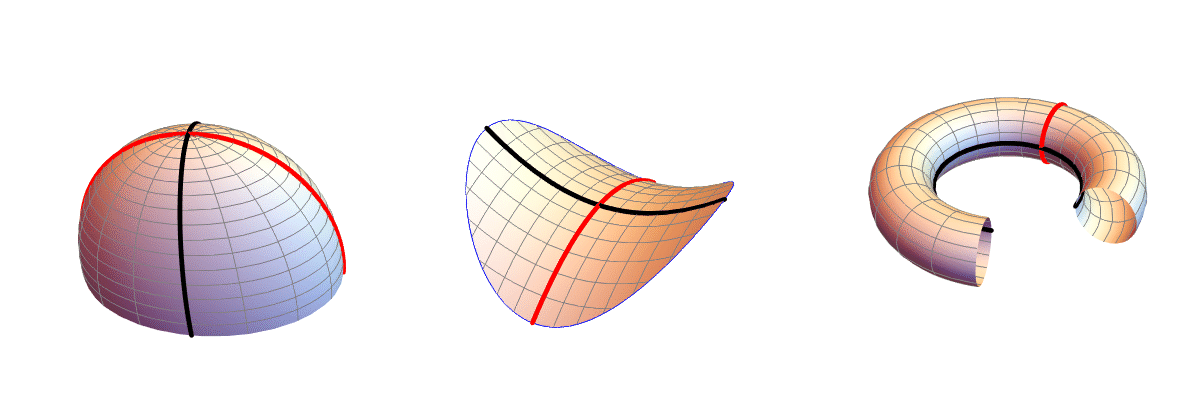
Negative Curvature
A surface has positive curvature at a point if the surface curves away from that point in the same direction relative to the tangent to the surface, regardless of the cutting plane. Alternatively, the surface stays on one side of the tangent plane at that point. Thus the top of your head, the end of your finger, or the inside of your armpit are points of positive curvature. The first image below, a bump, shows positive curvature.

A surface has negative curvature at a point if the surface curves away from the tangent plane in two different directions. The classic example is a saddle, which can be found on your body in the space between your thumb and forefinger, or along the inside of your neck. Any point on the inside of a torus has negative curvature because there are planar cuts that yield curves that bend in opposite directions with respect to the tangent plane at the point. Negative curvature — the saddle shape — arises spontaneously as nature tries to minimize energy; see the soap bubble photo above. Invisible Handshake is a form that has negative curvature at each point. Thus each point can be viewed as the keystone of two arches in different directions, and this feature gives the surface great strength.